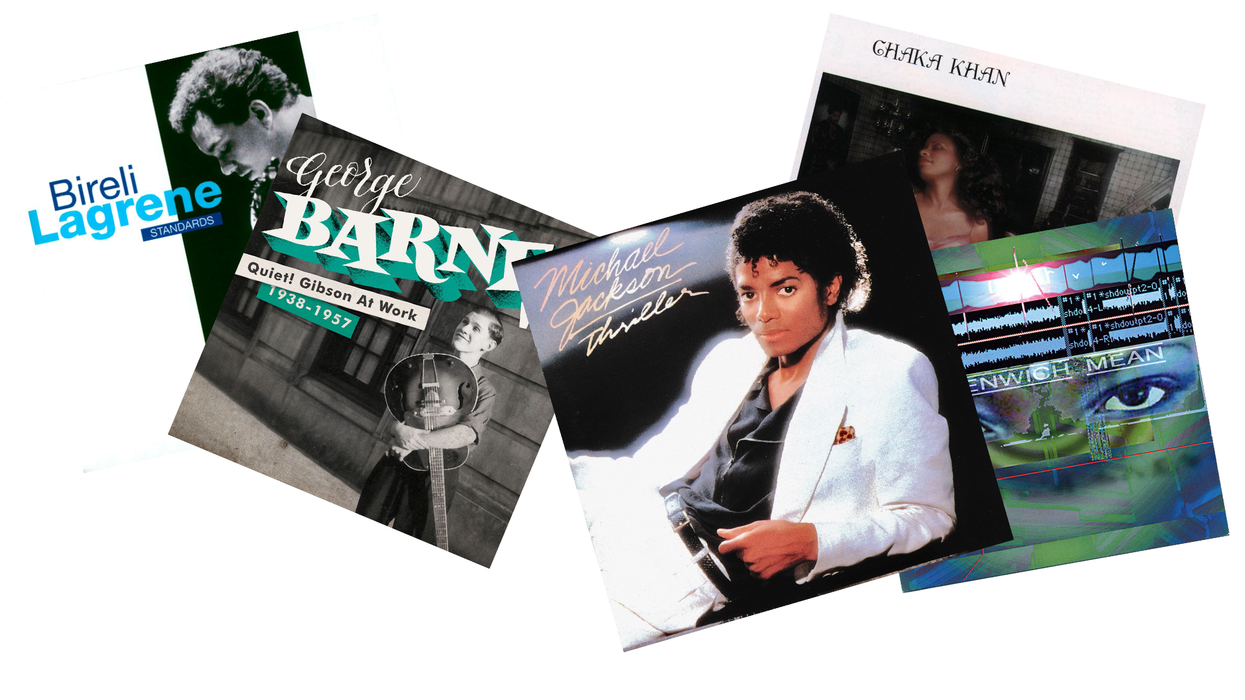Chops: Intermediate
Theory: Intermediate
Lesson Overview:
• Learn how to visualize chord-scales in an open tuning.
• Develop some basic slide guitar technique.
• Understand how Keith Richards creates his signature sound.
Click here to download a printable PDF of this lesson's notation.
Open G is a wonderfully versatile guitar tuning. It can delight beginners with simple one-finger chords (or even no-finger chords) and provide seasoned players with fresh ideas thanks to the rearrangement of notes on the fretboard. This lesson will explore a few applications, from gentle fingerpicked acoustic pieces to hard-driving, Keith Richard-inspired chord stabs.
The first thing we need to do is get into the tuning. From standard tuning (E–A–D–G–B–E), lower the 6th string to D, the 5th string to G, and the 1st string to D. Dropping these three strings by a whole-step yields D–G–D–G–B–D, which is open-G tuning.
One thing you’ll notice is that your lowest string is D, not G, which means you now have the 5 of a G chord in the bass. At first this might seem and sound a bit clunky and counterintuitive. Keith Richards, who has given the world so many classic open-G riffs, simply removes the 6th string, but trust me, you’re going to want it eventually.
Ex. 1 provides us with the most basic and essential chords (G, C, and D) in the key of G. With just one finger laid flat across all six strings, we can literally play hundreds of songs.
Click here for Ex. 1
Ex. 2 puts these one-finger chords to work by providing a playful slide phrase. While slide-guitar technique requires its own lesson, I suggest you acquire an inexpensive slide and give this example a try. It’s a lot of fun, and even with sloppy slide technique you’ll sound pretty good.
Click here for Ex. 2
One of the sounds most closely associated with open G is the jangle of dozens of folk-rock songs from the ’60s and ’70s. Ex. 3 shows you how to get some of those beautiful, lush chords—most of them variations on G—by using just two fingers and only two different fingerings.
Click here for Ex. 3
In Ex. 4 we put a few of Ex. 3’s chords to work in a lovely strumming pattern that pays homage to Jimmy Page.
Click here for Ex. 4
As wonderful as those simple open-string chords are, it’s good to know that this tuning can do a lot more than just jangle away on G. Ex. 5 shows that you can play a unique version of the classic I–VIm–IV–V progression (think “Stand by Me” or “Every Breath You Take” among hundreds of others) in this handy tuning.
Click here for Ex. 5
Taking the idea behind Ex. 5 to the next level, we find Examples 6 and 7 demonstrating a chord-scale in the key of G. It’s important to know that these are not the only fingerings available for these various chords, but they serve as a good starting point.
Click here for Ex. 6
Click here for Ex. 7
Moving in a completely different direction, Ex. 8 reveals the secret of Keith Richards’ signature sound. Moved in a variety of ways around the guitar neck, these two shapes form the foundation of more than a dozen classic Rolling Stones songs. Just crank up an old Ampeg V4 or Fender Twin, plug in your Telecaster (sans 6th string, if you want to be completely authentic) and suddenly you’ll be exiled on Main Street.
Click here for Ex. 8
Finally, Ex. 9 brings us back full circle to a John Fahey-inspired fingerpicking pattern. Ringing against a variety of bass notes, the open strings create harmonies that would be difficult to execute in standard tuning. Don’t underestimate this unadorned pattern: Sure, it’s easy to play, but the sounds coming out of the guitar are rich and complex, just like open-G tuning itself.



















